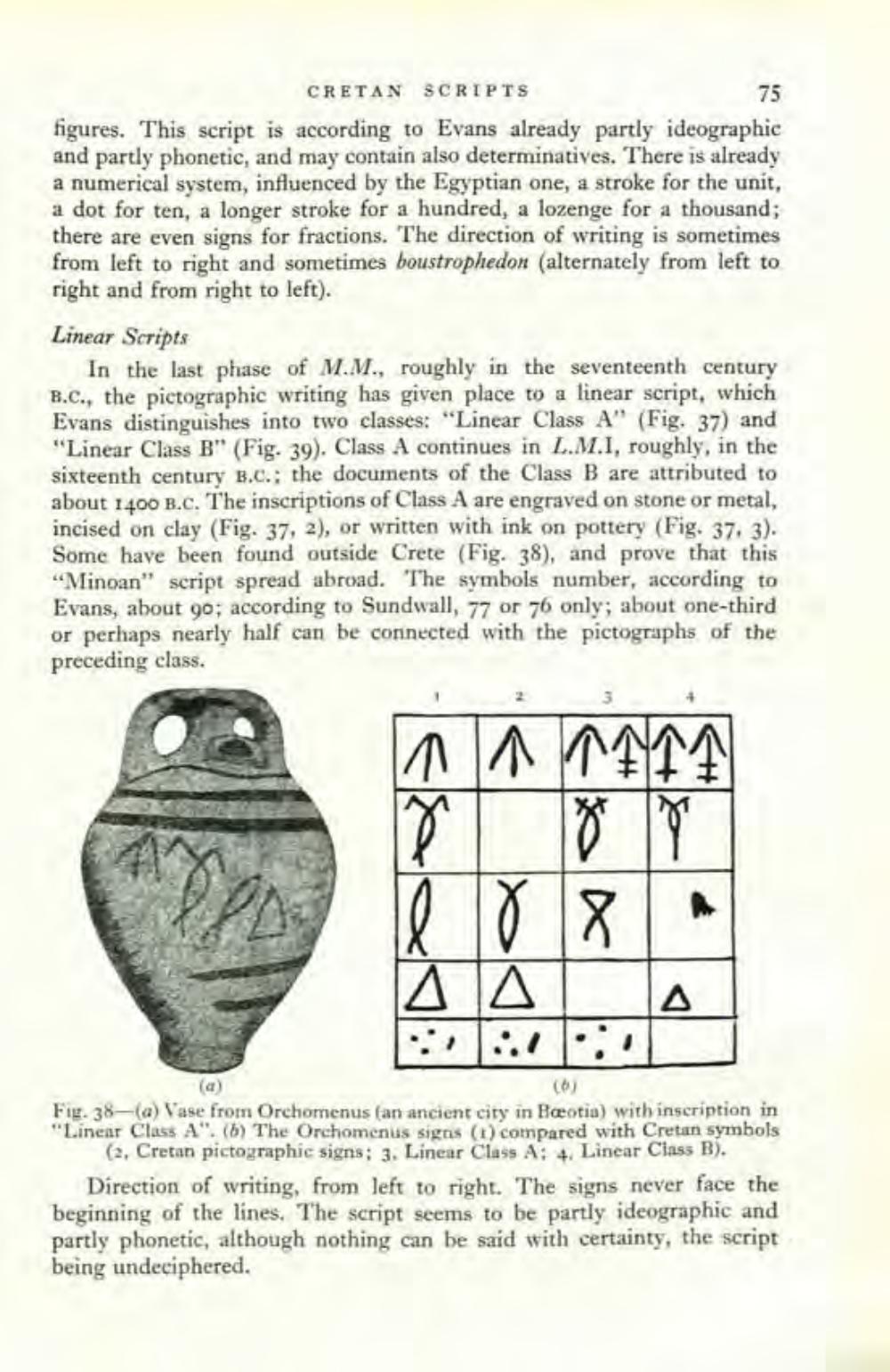________________
75
CRETAN SCRIPTS figures. This script is according to Evans already partly ideographic and partly phonetic, and may contain also determinatives. There is already a numerical system, influenced by the Egyptian one, a stroke for the unit, a dot for ten, a longer stroke for a hundred, a lozenge for a thousand; there are even signs for fractions. The direction of writing is sometimes from left to right and sometimes boustrophedon (alternately from left to right and from right to left). Linear Scripts
In the last phase of M.M., roughly in the seventeenth century B.C., the pictographic writing has given place to a linear script, which Evans distinguishes into two classes: "Linear Class A" (Fig. 37) and "Linear Class B" (Fig. 39). Class A continues in L.M.I, roughly, in the sixteenth century B.C.; the documents of the Class B are attributed to about 1400 B.C. The inscriptions of Class A are engraved on stone or metal, incised on clay (Fig. 37, 2), or written with ink on pottery (Fig. 37, 3). Some have been found outside Crete (Fig. 38), and prove that this "Minoan" script spread abroad. The symbols number, according to Evans, about 90; according to Sundwall, 77 or 76 only; about one-third or perhaps nearly half can be connected with the pictographs of the preceding class.
Fig. 38-(a) Vase from Orchomenus an ancient city in Baotia) with inscription in "Linear Class A". (5) The Orchomenus sigas (1) compared with Cretan symbols
(2. Cretan pictographic signs; 3. Linear Class A: +, Linear Class B). Direction of writing, from left to right. The signs never face the beginning of the lines. The script seems to be partly ideographic and partly phonetic, although nothing can be said with certainty, the script being undeciphered.




